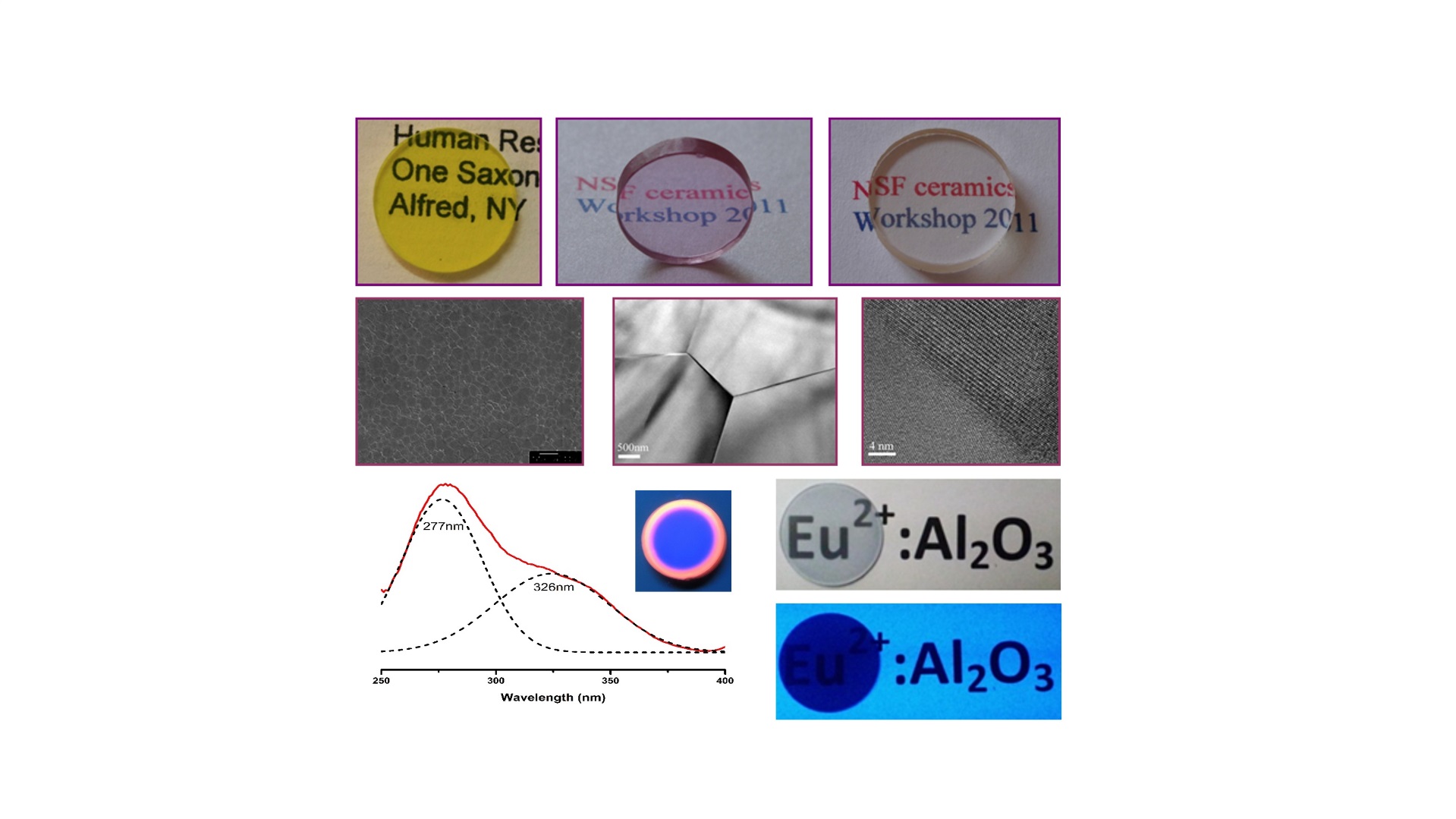Research
Transparent Optical Ceramics
Transparent ceramics are emerging as a promising alternative to single-crystal materials for their potential use in a wide range of optical and photonic applications, the most notable of which include ceramic lasers and scintillators. The performance of ceramic lasers depends strongly on the properties of the host materials, rare-earth ions which sinter into the polycrystalline ceramics and the grain boundary interactions. Studies on the microstructure and chemistry of these grain boundaries should lead to a fundamental understanding of how they can influence optical properties. This knowledge will facilitate a high level of control over nanometer and sub-nanometer microstructural changes as well as compositional changes to ultimately develop high-performance optical ceramic materials.

Green Processing of Advanced Ceramics
Our research group is pursuing the improvement of bulk transparent ceramics processing. Research on transparent ceramic chips is important to the advancement of optical ceramic applications. Our aim is to develop and study advanced transparent ceramics for microchip lasers and ceramic substrates for solid-state lighting. A new studied gelling system devoid of toxic organic compounds has been investigated for the processing of these transparent ceramic chips. The mechanisms and characteristics of this new gelling system are being studied to better understand the fundamental rheological behavior of the colloid suspensions. This novel green process is promising for the development of transparent ceramics with controllable morphology for optical and photonic applications.

Electrohydrodynamic Processing
Within the past several years, there have been considerable efforts to employ electrohydrodynamic atomization for processing biologically nanostructured materials for various biomedical applications. New technologies are under development to generate nanostructured materials for applications in the fields of renewable and clean energy. Nanofiberous materials with high surface areas are considered to be promising candidates for facilitating these critical applications. Electrohydrodynamic processing has been studied to synthesize fibers and particles with dimensions ranging from micrometers to nanometers. These structural elements will be used to develop novel architectures for biomedical and energy-related components and devices.




